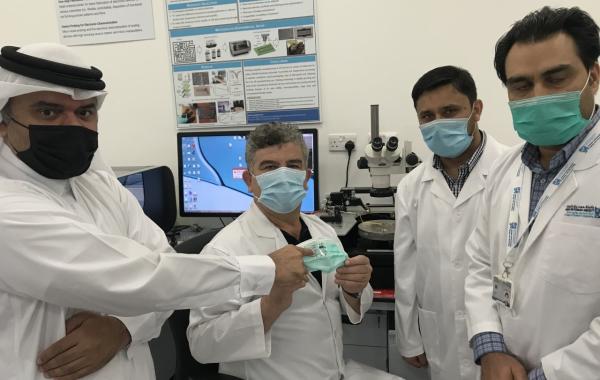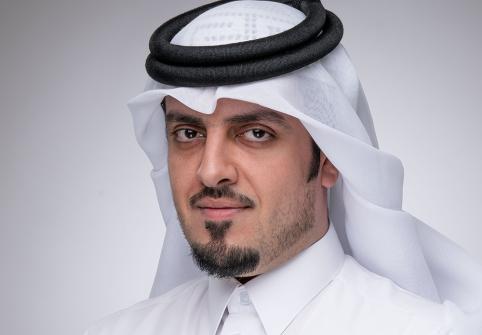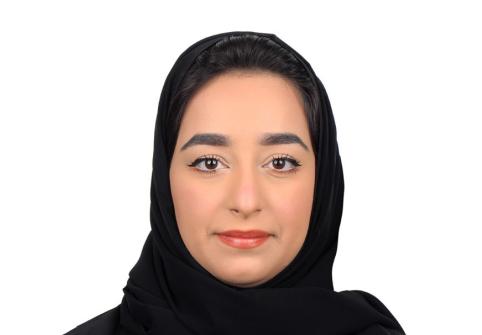Press Releases Smart Masks: HBKU Researchers Make Strides in Multisensory Wearables
The burden of chronic disease and aging populations have sent healthcare costs spiralling out of control, and medical professionals have turned to digital solutions for efficiency gains. Among the innovations, medical-grade wearables have been growing in demand. Non-invasive and autonomous, their ability to gather valuable data make smart medical wearables a potentially powerful tool to monitor different diseases and conditions.
At Hamad Bin Khalifa University’s (HBKU) College of Science and Engineering (CSE), a group of researchers has made decisive progress on engineering intelligent wearables. Featuring printed, nano-material multisensory patches, their wearables are capable of detecting and monitoring a set of physical health parameters with remarkably precise accuracy, and in real-time.
Under the stewardship of Dr. Amine Bermak, Professor and Associate Dean of CSE, the Sensor Research Group, which is unique to the region, brings together world-class sensor technology experts. The ongoing pandemic saw the group advance the work on their prototype “smart mask”, which is designed to be worn like today’s commonly used medical facemasks. The very light device is able to measure variables like body temperature, respiration, humidity, as well as inhale and exhale frequency, including coughing and other irregularities in breathing patterns.
Elaborating on this “made in Qatar” innovation that has effectively integrated intelligence into daily wearables, Dr. Bermak explains: “The entire idea and research on this technology predates COVID-19. It was fully envisioned and brought into play at HBKU’s College of Science and Engineering and by the brilliant minds in the Sensor Research Group. The innovation behind the masks is the printing of sensors on textile at a low cost and amplifying the originally very low signal on a handheld device.”
Of significance is the device’s capacity to analyze gases contained in its wearer’s breath, representing medically defined biomarkers for an array of diseases.
The concentration of detected acetone for instance, can provide an early indication of an individual’s risk of being diabetic, which may help in designing more proactive, preventative health and lifestyle measures. Likewise, sensors can be integrated to reveal influenza-type sicknesses, possibly even the currently active COVID-19. This prospect, however, remains a work in progress at this stage, as knowledge about the complex nature of the coronavirus keeps developing.
The prototype’s sensor unit is designed to be particularly affordable and disposable. Other wearables in the future may be washable, much like any item of cotton clothing. While the actual sensory patch is applied to the corresponding textile using a technique comparable to ink-jet printing, the central and costlier unit will be a module that can be connected and detached from the patch for consistent reuse, control and wireless transfer of the acquired data to a mobile phone or smart watch for example.
Already past the initial concept stages and on its way to being registered as a patent, the device’s functions have been tested and translated into reality in the College’s lab, where the nano-material’s ability to reliably detect and display vital signs on a mobile phone has been proven. Study and assessment of its commercialization potential has shown promising outcomes, prompting international companies to seek partnerships with HBKU to bring the technology to market.
“While at the research level the project is already very advanced, the manufacturing aspects still require some work”, explains Dr. Bermak, who was elected chair of the Sensory Systems Technical Committee at the Circuits and Systems Society, Institute of Electrical and Electronics Engineers (IEEE), a year ago.
“The eventual cost per device depends on the scale of manufacturing. At this point, it is in principle thinkable to produce such wearables in Qatar, rather than elsewhere. This would ideally be done in collaboration with an existing masks or clothing manufacturer, where we could merely embed our process as an upgrade,” he continues.
The wearable market in the healthcare industry is a dynamic one and reflecting on its potential, Dr. Bermak concludes: “The smart mask represents a significant step forward in applying smart technology in people’s everyday lives to improve modern quality of life. Such technology will remain long after the current pandemic is history.”



